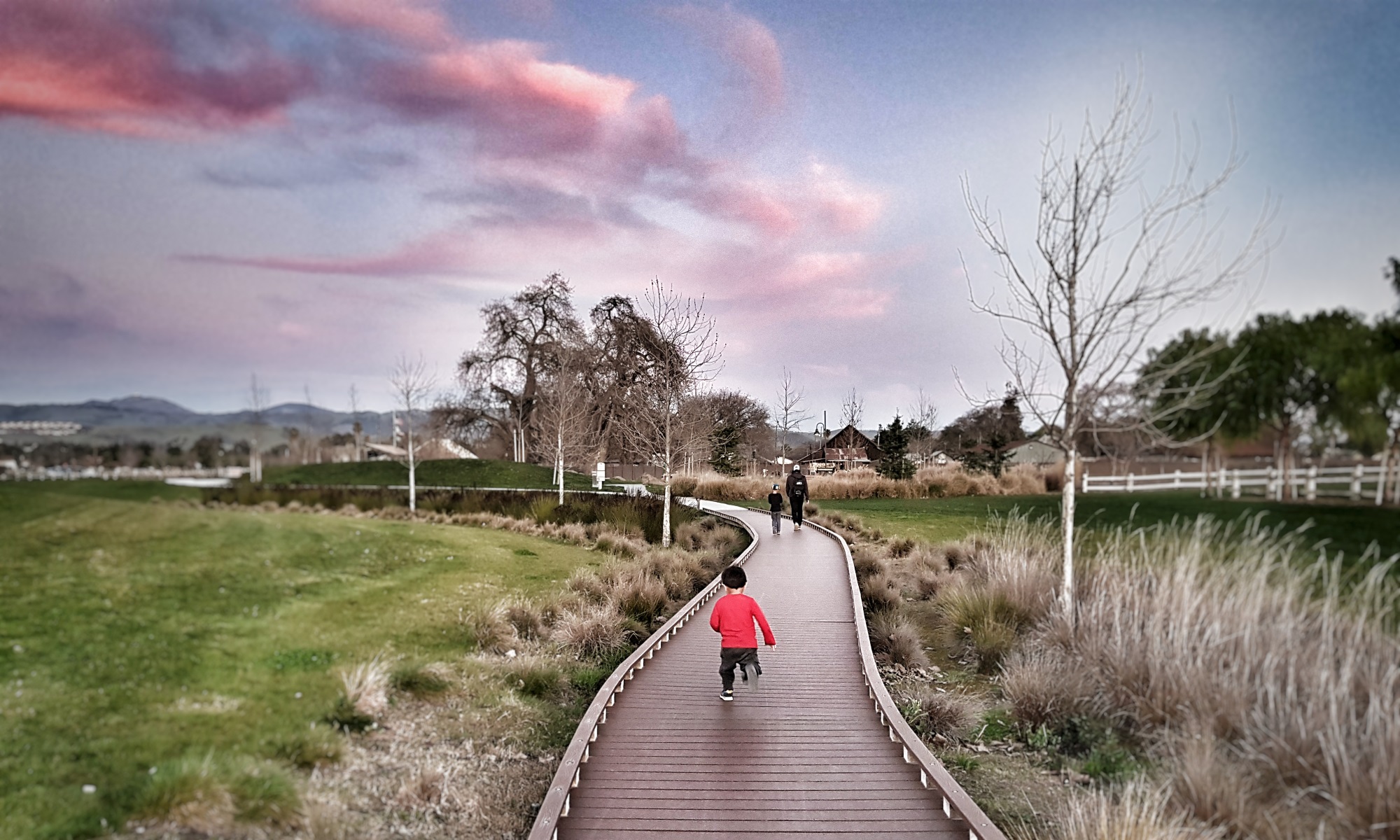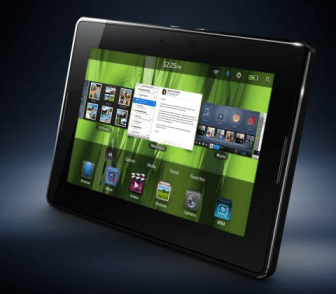
Now that I’ve had a full week with the Blackberry Playbook in my hands I must say it has been a very interesting experience. The Playbook is Research In Motion’s (maker of Blackberry) foray in the tablet market. Unlike the popular iPad it is a 7 inch device and it is marketed as the first “Professional” tablet because adding “professional” makes it sound so much cooler. I’ve been anticipating this Playbook for over six months, and as a fan of their phones I had high expectations for it. So did it live up to the hype?
Hardware
First, lets look at the hardware. The Playbook is solidly built. If you take away the Blackberry logo from it you may mistaken it for a device that could have been built by Apple. There’s a slight heft to the device and seems to weigh more than it looks which adds that solid feel to it. The 7 inch form factors usefulness is subjective and depends on how you use your device. If you like to carry your tablet with you everywhere then this form factor is hands-down the best choice. If you’re a media junkie the Playbook will satisfy your needs; visually and auditory. The Playbook’s screen is amazing. With a 1024×600 resolution jammed into a 7″ screen it packs quite a bit of pixels that makes pictures and videos look very sharp and crisp. As for the speakers they’re perfectly placed on each side of the screen to give that stereo sound. When it comes to sound quality the Playbook speakers have no competition in this department in the tablet world, at least not yet.
Many reviewers out there and people on the forums have complained about the power button being too flushed to be usable. The power button on my Playbook works great and I can hit it every time to turn off the screen. I haven’t had a problems with it. Maybe there’s a bad batch that are giving some of these owners headaches.
Battery Life
According to RIM, the battery should last around 8-10 hours. From my personal experience 7-8 hours is more likely the norm. That’s decent and is average compared to other tablets. And like any other devices watching videos and listening to music can quickly drain it. Fortunately for Playbook owners, the device comes with a plug-in charger that can recharge your Playbook pretty quick. For me it seems like the included charger charges my Playbook 2-3 times faster than using my Blackberry phone charger or when connected to a computer with the micro USB cable. It’s most likely due to the higher amperage in the Playbook charger.
Web Browsing
The Playbook is touted to have the best web browsing experience, and my conclusion to that statement is unfortunately “No”. It’s better in some areas and not so much in others. The Playbook supports Adobe Flash right out of the box, so now those who are looking to watch flash videos on your tablet you now have an option that is not an Android device. One of my favorite websites to watch videos is South Park Studios. You can watch all your favorite South Park episodes right from the browser. The downside of having flash is you’ll also have to deal with the ads made with Flash. These ads can sometime slow down your browser, but for me its not much of a difference to be of any concern. But you have the option to disable flash quickly from the settings in the browser.
There are a few annoying glitches with the browser. Some times when scrolling through pages with Flash Ads the Playbook can’t distinguish scrolling from actually clicking on the Flash ads. The browser will inadvertently open a new tab from that Flash ad. Another annoying part of the browser is its Bookmarking. You’re unable to edit or manage the bookmarks. Basically, you just add the bookmark and the browser will save it randomly to your list. You can’t rename it or organize it. The browser also lacks the ability to automatically scroll to the top of a long webpage where as the iPad can by simply tapping the top of the screen. So RIM, “best web experience?” Fix these little glitches then we’ll talk.
OS and User Interface
The Playbook uses a brand spanking new OS from QNX. This OS also happens to be the future of RIM as it will also be used in their upcoming phones. The Playbook OS is liquid smooth and rock solid. The only time I had to reboot the device was when I was updating the OS. What makes the Playbook fun and efficient is its bezel gestures. The swipes to close an app, to switch to an app, go to the home screen, to bring up the contextual menus/options, and swipe to turn on the screen is very intuitive. It’s without a doubt the best feature of the Playbook. What supplements that awesome feature is the Playbook’s multitasking abilities. Having multiple apps and tasks running in the background gives your piece of mind that its doing what it’s suppose to do and when you’re doing other stuff. Some times I find myself just swiping between apps just for fun and swiping back to the home menu to see if I can load any other apps. It goes to show that the QNX OS is powerful and efficient. I can’t wait for it to be on RIMs phones.
Apps, Apps, Apps
One of the big negatives for the Playbook is the lack of Apps in their AppWorld store. One could argue that compared to the initial release of other tablets they didn’t have as many as well, and that the Playbook has more apps than the other tablets for their initial releases. For typical users, they’re not going to care. It’s like a car manufacture releasing a new model that doesn’t have airbags, air conditioning, AM/FM radio, power steering, and power windows then argue that when the Ford Model T was release it didn’t have those features either. RIM really dropped the ball on this one. They haven’t even released a Native Developers Kit for the Playbook. Most developers now are just porting over Adobe Air apps which aren’t all that great. Apple has shown that having high quality apps are essential to the usability of the tablet. RIM is banking on their browser to pick up the slack on this one until their NDK is released, and they better do it soon. People who are trying the Playbook and looking to switch will look for their favorite apps, and if its not there they’ll go elsewhere that has it.
Blackberry Bridge
Some of you maybe shocked that the Playbook doesn’t come with a native Email client or calendar (RIM promised those natives apps will be coming soon). RIM expects you to get those features by connecting your Playbook with your Blackberry phone, they assume if you bought a Playbook you’ll have a Blackberry phone as well. Then again, if you don’t, RIM expects you to use their “awesome” web browser for access. The Playbook as a feature called Blackberry Bridge. But you need to install a simple app on your Blackberry phone where you’ll then setup a connection with the Playbook. It uses a secure Bluetooth connection where it allows your Playbook to act like a window that can peer into your emails and calendar on your phone, and at that point your Playbook will seemingly feel as though you have a native email and calendar app, which in fact you don’t. If you lose your phone or get far enough from your phone the Bridge feature will be disabled until they can re-establish that connection, but in fairness re-establishing the connection is seamless and transparent. It’ll automatically connects once you’re phone is close enough. But there’s a feature that I think would be a game changer, if RIM can actually get it to work, called the Bridge Browser. It’s a dedicated browser that can be used to access the internet using your Blackberry phone’s cellular connection. The feature is free, it uses your existing phone’s data plan, and doesn’t require a seperate tethering plan. Unfortunately, it doesn’t work as it should.
At this time, AT&T has not approved the Blackberry Bridge App for their Blackberry phones, but there’s a workaround for getting the app HERE.
Miscellaneous
The Out-of-box-experience is more or less typical. You don’t need to connect it to your computer to get it going unlike the iPad which requires iTunes to activate it, but the Playbook does need a Wifi connection. Without one you’re not going anywhere pass the setup process. So those who rushed out to get the Playbook quickly realized that setting it up in the car on the way home wasn’t possible.
With the Playbook you can manage the data backups with the Blackberry Desktop Manager. You can also use it to sync up with your iTunes media on your computer. What’s great is that you also have the option to just use the drag-and-drop function to copy over your media to the Playbook. But there’s a catch. When you plug your Playbook into your computer your system will install a driver and set the Playbook as a network drive rather than an external drive like with your Blackberry phones or USB flash drive. So if you’re using a restricted computer that prevents you from install drivers you many not get access to your Playbook.
My Verdict
The Playbook on it’s own will have a hard time convincing it’s a worthy competitor to the existing tablets out there. But coupled with a Blackberry phone the tide changes dramatically. And if RIM can get the Bridge Browser to work it will even turn the tide even more. As for the Apps, it’ll come, and the minor glitches will be fixed with patches and updates. I love the 7″ size of this tablet and I’m sure those who are always on-the-go will love it too. I think if Apple made a 7 – 8″ iPad it’ll probably end up being more popular than its 10″ version. When it comes to the build and hardware RIM has got it spot on, but the software is where they need to do some more work.
I’m confident that RIM will get the Playbook where it needs to be as they have already pushed out several updates, its too bad they couldn’t do it on release day.
Rating: 









NOTE: With the right updates from RIM an 8 out of 10 is very possible.

















